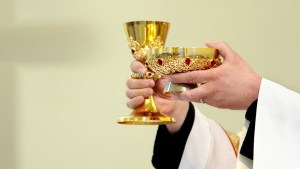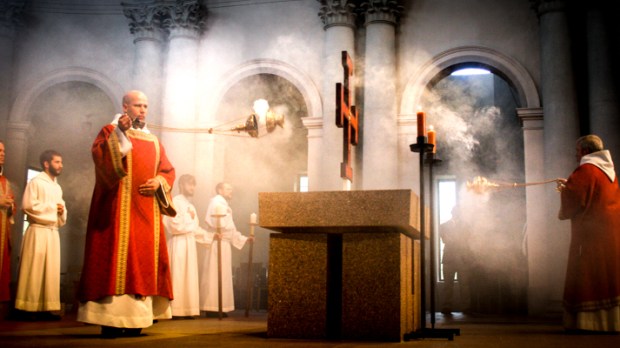The Catechism reminds us that prayer involves much more than our soul, “Whether prayer is expressed in words or gestures, it is the whole man who prays” (CCC 2562).
For this reason the Church’s public forms of worship contain numerous elements that are visible and engage our bodily senses. The Catechism teaches us that, “In human life, signs and symbols occupy an important place. As a being at once body and spirit, man expresses and perceives spiritual realities through physical signs and symbols. As a social being, man needs signs and symbols to communicate with others, through language, gestures, and actions. The same holds true for his relationship with God” (CCC 1146).
To help engage all of our senses during the celebration of Mass, lifting up our bodies and souls to God, the Church for centuries has used incense as an important exterior sign.
Incense was a vital part of worship for many ancient religions, including the Jewish worship of God. In the Tabernacle, as well as the Temple, God commanded that an “altar of incense” be built. God directed that Aaron, the High Priest, “shall burn it, a perpetual incense before the Lord throughout your generations” (Exodus 30:8).
Connected to this tradition is the best known phrase mentioning incense in the Old Testament, “Let my prayer be counted as incense before thee, and the lifting up of my hands as an evening sacrifice” (Psalm 141:2).
Christians quickly adopted the use of incense, and it appears prominently in the book of Revelation in the heavenly liturgy, where St. John describes, “the smoke of the incense rose with the prayers of the saints from the hand of the angel before God” (Revelation 8:4).
In light of the above scripture passages the primary meaning behind the use of incense is to symbolize our prayers rising up to God. When we see the incense we are reminded that the priest is there to gather up our petitions and plead on our behalf before our loving and merciful God.
Incense also calls to mind the heavenly reality of the Mass. It connects our celebration to the heavenly liturgy depicted in the book of Revelation and reminds us that the Mass is a meeting place between heaven and earth.

Read more:
The spiritual reason chalices are made from precious metal
Last of all the thick cloud of incense can often obscure our view of the altar. This is a good thing and reminds us of the mysterious nature of the Mass. Our mortal minds cannot comprehend fully the mystery that is being celebrated before our eyes and the incense makes that reality even more tangible.
So while the use of incense can seem strange at times, it has deep spiritual roots and has been a part of divine worship for thousands of years.

